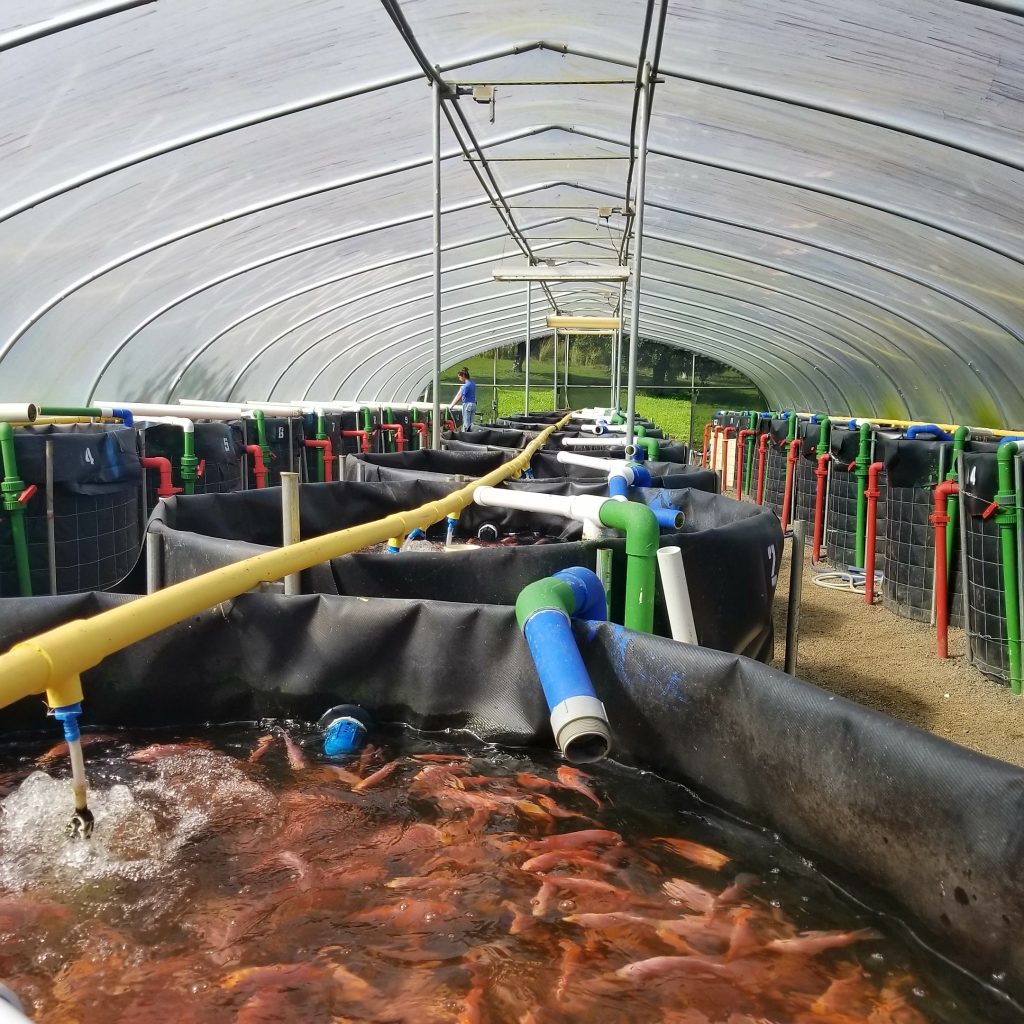
Egg-to-market operation helps boost tilapia’s acceptance
March 27, 2018
By Treena Hein
Viewed by locals as “dirty trash fish,” a non-profit helps tilapia win the hearts and minds of Hawaiians
There has been no stopping the success and progress of Kohala Mountain Fish Company (KMFC) in Kapaau, Hawaii since operation began in late 2014. The operation is situated on, and jointly owned by, the Kohala Institute. The not-for-profit institute promotes connection to traditional Hawaiian lands and their sustainable use, with the goal of creating a better world.
Before KMFC got going, tilapia farming in the state was extremely limited, notes KMFC General Manager/Head Biologist John Oliva. “Tilapia in Hawaii did not have a very good reputation,” he explains. “It was viewed as a dirty trash fish… It has taken some work by KMFC and others like Denise Yamaguchi from the Hawaii Food and Wine festival to win hearts and minds here. Our products have received much praise in the marketplace for their presentation, flavor and fat content, allowing us to get a higher market price from the target customer base.” Currently, Kohala supplies whole fresh fish to distributors in Oahu and to restaurants as far away as New York.
Eco-friendly
In harmony with the values of the Kohala Institute, the operation is designed to be as environmentally friendly as possible. Tilapia was chosen as best for integrating with all the sustainable aspects of the Kohala operations, in addition to being the most easily acquired and easy-to-rear fish, with a fast growth rate and great market versatility. Water for the fish is sourced from a spring inside nearby Kohala Mountain and after flowing through the fish farm, it’s filtered through water cress tanks and settling ponds before moving into various gardens and macadamia nut orchards. Fish farm sludge is composted with processing waste and Institute green waste to fertilize cattle pastures.
KMFC uses a batch harvesting method and a stocking density of 60 kg/m3, with egg-to-harvest timelines of six to nine months. The hatchery has 10 recirculating 600-gal round broodstock holding tanks, three 1,000-gal spawning tanks, 12 McDonald upwelling hatching jars and 24 self-contained 150-gal fry-rearing tanks. The nursery consists of 36 1,000-gal round tanks on three recirculating systems. Grow-out occurs in 47 30,000-gal round tanks, operating as completely flow-through to completely recirculated.
No antibiotics or other substances are used to farm the fish, and the feed is all “certified sustainable” from Ewos. Oliva’s relationship with Ewos began over a decade ago when he was the manager of a salmon hatchery in Alaska. There he found Ewos outperformed other feeds and he formed a great relationship with the Ewos feed rep. He says all the Ewos feeds have been useful at KMFC, but especially the #00 micro diet. “[It] has reduced mortalities in our swim-up fry (first feeding) by about 50 percent over the #0 feed and…a doubling in growth rate.”
It’s in KMFC’s feed trials in the grow-out phase, however, where Oliva says Ewos’ knowledge in fish nutrition and feed manufacturing has been particularly valuable. KMFC’s fish are red tilapia, and in Oliva’s words, “we wanted something that would make their color pop. We had Ewos add some astaxanthin to the feeds, which has the additional benefit of providing antioxidants to the diet. The fish responded beautifully with color and vigor.” A colour change in the flesh (desired by some customers) is achieved through longer feed duration and higher amounts of astaxanthin. KMFC’s latest trial involves feed higher in protein and fat to produce fish that really smoke well, and initial results look promising, Oliva says.
Farm-to-market
It was critical from the start for KMFC to be an integrated operation — from egg to processing — because Hawaii has strict importation rules, Oliva adds. This arrangement also circumvents the increasing threat of tilapia lake virus (TiLV) reaching the islands. Having a processing facility is “necessary to be able to sell and market the amount of tilapia we are producing and will be producing,” says Oliva. “We have 1 million lbs of fish ready now and we hope to have at least moved 3 million lbs through the system by years’ end. With the completion of our fish processing facility slated for March, we will be looking to bring our satellite co-op farms on board. We provide the technical and biological expertise, the seed stock and feed to the farmers, so we will be able to control the quality and consistency.”
In addition, KMFC will expand its hatchery and nursery, and add 40 more grow-out tanks. The firm will start shipping its production to mainland wholesale distributors and also start producing whole frozen fish and fillets (including a very small frozen fillet for the USDA farm-to-school program). “We even have interest in our product from buyers in South Korea,” Oliva reports.
Over his nearly 30 years in aquaculture, Oliva has seen consumer attitudes fluctuate, and notes that the times where consumer perception is down were usually a result of unsubstantiated rumors started by a person or group with an agenda. When a fish farmer or the industry in general can address legitimate concerns with scientific truth however, he notes public attitudes become positive. Oliva believes the future is bright for aquaculture as the need for healthy, sustainable protein grows.
 It was critical from the start for KMFC to be an integrated operation — from egg to processing — because Hawaii has strict importation rules
It was critical from the start for KMFC to be an integrated operation — from egg to processing — because Hawaii has strict importation rules 




